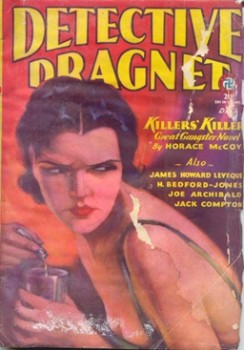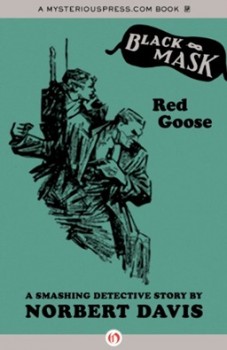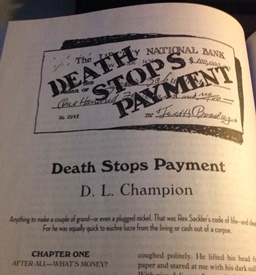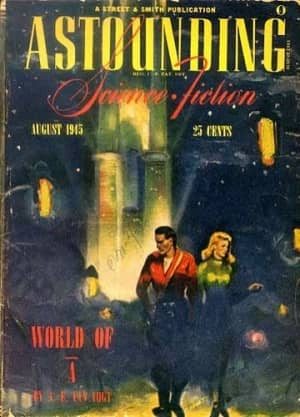A (Black) Gat in the Hand: W.T. Ballard’s Bill Lennox
 One of the authors that I’ve ‘discovered’ while working on A (Black) Gat in the Hand is W.T. Ballard. I had read a story here and there in various anthologies, but nothing stuck with me. I knew he was a Black Masker and had been successful as a writer of westerns. But I’ve just read a couple stories of his Hollywood ‘fixer,’ Bill Lennox and I was sold!
One of the authors that I’ve ‘discovered’ while working on A (Black) Gat in the Hand is W.T. Ballard. I had read a story here and there in various anthologies, but nothing stuck with me. I knew he was a Black Masker and had been successful as a writer of westerns. But I’ve just read a couple stories of his Hollywood ‘fixer,’ Bill Lennox and I was sold!
Ballard, who wandered out west when the Depression hit, had been trying to sell to the New York pulps with minimal success. He saw a Detective Dragnet Magazine with one of his stories in a store window (December, 1930). As he walked away, a man called out his name: it was Harry Warner, who he had known a little back in Cleveland, where the family had been making movie trailers for local organizations. Warner asked what Ballard was doing in Hollywood. A bit embarrassed, the latter exaggerated a bit, bought that magazine and gave it to Warner, saying he was a freelance writer.
Warner and his brothers had just taken over First National Studios, and impressed with Ballard, Harry W. hired him as a screenwriter at a good salary. That gig lasted eight months until Ballard made a crack about Warner, not knowing the man was standing behind him. Fired!
Ballard was picked up by Columbia Pictures, who hired him to produce B-films for $10,000 each. To hit that target, Ballard had to write the script, direct and produce, and even move scenery for shoots. He endured this exhausting assignment for six months – but the two studio jobs gave him an invaluable inside knowledge of the industry.
In 1931, Ballard was struggling, trying to write and sell to Detective Story Magazine, which favored Agatha Christie/Mary Roberts Rinehart types of mysteries. At his uncle’s house (where he was living), he heard a radio ad for The Maltese Falcon, a movie starring Ricardo Cortez (Bogart hit gold in the third adaptation). He went to see the movie. As Ballard said in an excellent interview conducted by Stephen Mertz. “Hammett’s ear for words sounded the way I thought criminals and detectives should talk. It rang true, the way I wanted mine to do.”
The radio ad had mentioned Black Mask, which Ballard was unfamiliar with. After the movie he went around the corner, bought the latest issue and read it on the streetcar ride home. He was hooked.
Ballard didn’t want to write about the typical newspaper reporter. His friend Jim Lawson worked at Universal Studios and was often called on to get stars out of trouble. Ballard liked the idea, knowing he had the studio experience to write realistically. Using the phone book to help with names, that very night, around midnight, he started writing. About five in the morning, he had a 10,000-word story featuring Bill Lennox. He mailed the manuscript off and went to bed.








